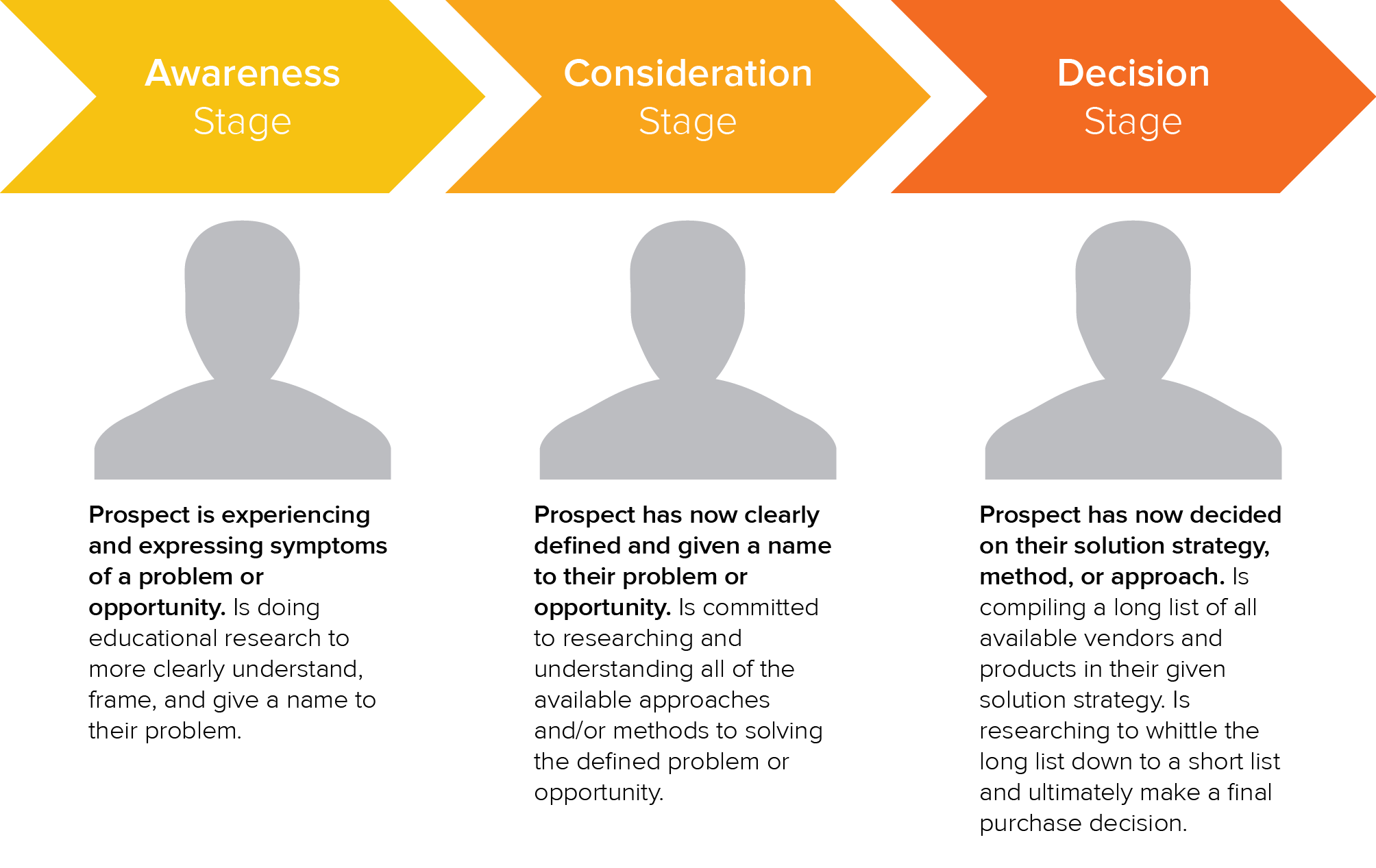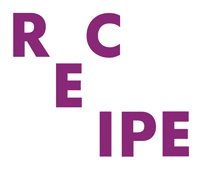They say ‘content is king’: and with businesses who effectively use content reporting 4-10 x higher lead rate and 20% increase in sales-ready leads, it’s easy to understand why content marketing has been granted such a regal title. But it’s time-consuming to produce, and a lot of businesses are spending a lot of time producing content that does not lead to a revenue outcome.
In this article, we walk you through;
-
Why content marketing, and what outcomes content marketing can produce for your business
-
What content should be used at each stage of the buyers journey and what your goals for content at each stage of the buyers journey should be
-
How to get high-value, quick wins with content your business may already have produced.
Why content marketing, and what outcomes it can produce for your business
Most of the time, before becoming a customer, a prospect will travel along the “buyer’s journey”: these are the stages a customer goes through leading up to their purchase.
- Top of the Funnel: The "awareness" stage, where people looking for answers, resources, education, research data, opinions, and insight.
- Middle of the Funnel: The "evaluation" stage, where people are doing heavy research on whether or not your product or service is a good fit for them.
- Bottom of the Funnel: The "purchase" stage, where people are figuring out exactly what it would take to become a customer.

It's a marketer's job to give a prospective buyer the fuel to move them along the funnel toward a purchase. Statistics show that people get up to 60% of the way through a buying process before they’re ready to talk to anyone about making a purchase.
The internet has made it easier for marketers (and salespeople) to engage customers at the various stages of their journey using content marketing.
In a nutshell, content marketing can produce more traffic, more leads, and more sales.
The benefits of a successful content marketing strategy include;
- Better qualified leads: the sales team can connect with leads who are better-educated on benefits, pricing, and advantages over competitors. This makes for;
- Shorter sales cycles and increased conversions: you can reduce the time it takes from sales’ initial contact with a lead to sale, and increase conversions. This leads to;
- Increased revenue: if content is delivered in the right way for prospects, at the right time for prospects, you’ll increase revenue.
What content should be used at each stage of the buyers journey
When you define each stage of your buyers journey, and map content to each stage of your buyers journey, you can move customers to the purchase stage.
Here are content ideas for each stage of the buyers journey;
Top of the Funnel: Awareness
A buyer is looking for high-level educational content to help better understand their problem, ramifications of their problem, and the ways they can solve a problem.
Capture their attention is through optimised, high-value content like
- ebooks
- white papers
- reports with original research
- videos
- social media content
- courses and certifications.
Awareness-stage goals include:
- Increased web traffic. Driving a buyer to your website to consume content that explores their problem and potential solutions
- Increased lead generation. Capture a lead by asking for their email address in exchange for useful, helpful content.
KEEP IN MIND: At the awareness stage, a prospects value as a lead is low: there’s no guarantee that they’ll buy from you. But those who find your content helpful and interesting may journey on to the middle of the funnel.
Content Ideas for the Evaluation Stage
Evaluation is arguably the most critical point in the buyer’s journey because this is where prospective customers start eliminating solutions that aren’t a good fit.
The most effective types of content in the evaluation stage are;
- expert guides and quizzes
- webinars
- live interactions
- whitepapers that compare your features and benefits with that of your competitors.
Evaluation-stage goals include:
- Increased return web traffic.
- Increased engagement with the submission of multiple forms across your website.
Content Ideas for the Purchase Stage
Most websites are littered with bottom-of-the-funnel content: calls-to-action for trial offers, demos, downloads, and estimate request buttons -- despite the fact that the majority of their audience isn’t ready to buy initially.
By itself, a bottom-of-the-funnel offer isn’t likely to close a lot of leads into customers. But when a bottom-of-funnel offers appears *after* a lead has been nurtured through awareness and evaluation, you’re combining the compelling nature of that final offer with all the engagement you’ve created leading up to that point. You’re more likely to close and see an increase in conversions.
The most effective types of content in the purchase stage tend to be
- case studies
- trial offers
- demos
- product literature.
Purchase-stage goals include:
- Increased conversion in demo offers
- Increased conversion in meeting bookings
- Increased engagement direct to the sales team
- Increased purchase/revenue.
How to get high-value, quick wins with content
Many businesses already have content they can use in the awareness stage: it may be content that already sits within the marketing team in the form of;
- Customer surveys that explore the challenge your customers face, and the problems not addressing this problem can create
- High quality imagery that’s aesthetically inspiring can be turned into a lookbook to show options
Many businesses already have content they can use in the evaluation stage: it may be content that already sits within the sales team in the form of
- Competitor comparisons
- Pricing comparisons.
You can turn these sales tools into content that can better enable customers to evaluate your offering.
Many businesses already have content they can use in the purchase stage: it may be content that already sits within the customer service team in the form of;
- Feedback from customers that, if edited and coupled with imagery, can be used to create case studies
- Product literature: how-to’s, and video content give confidence in the solution your company offers rather than delving too deeply into technical literature.
